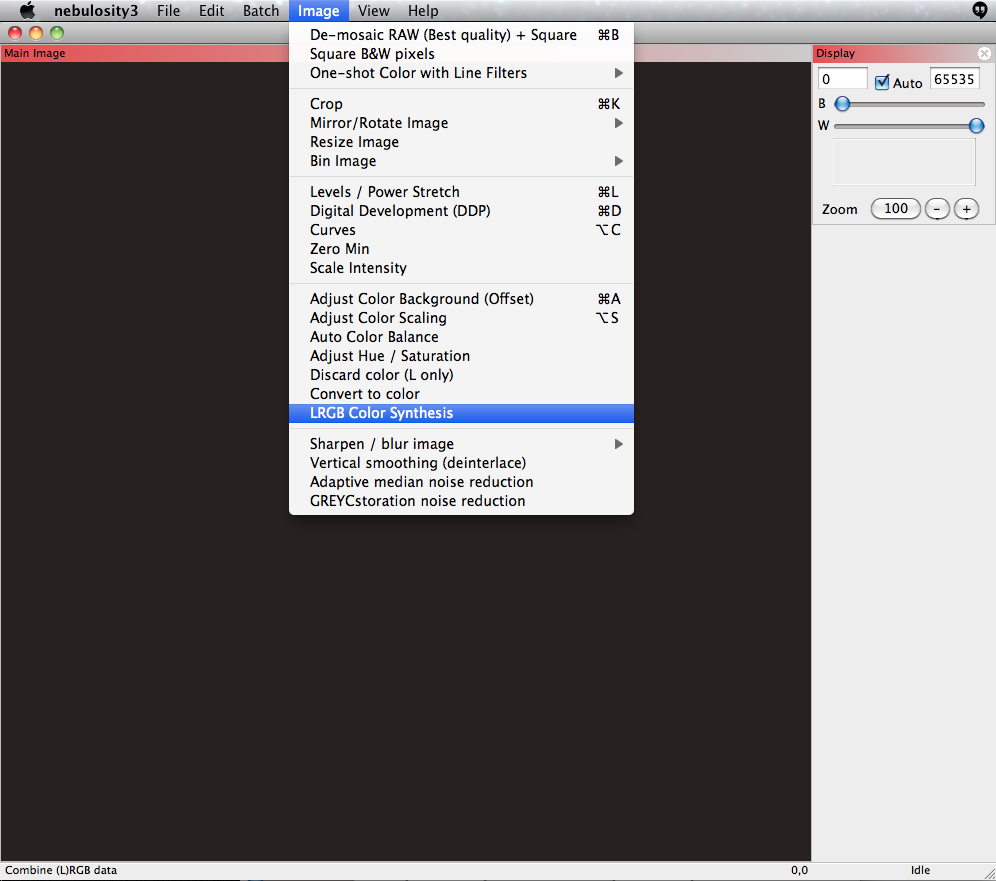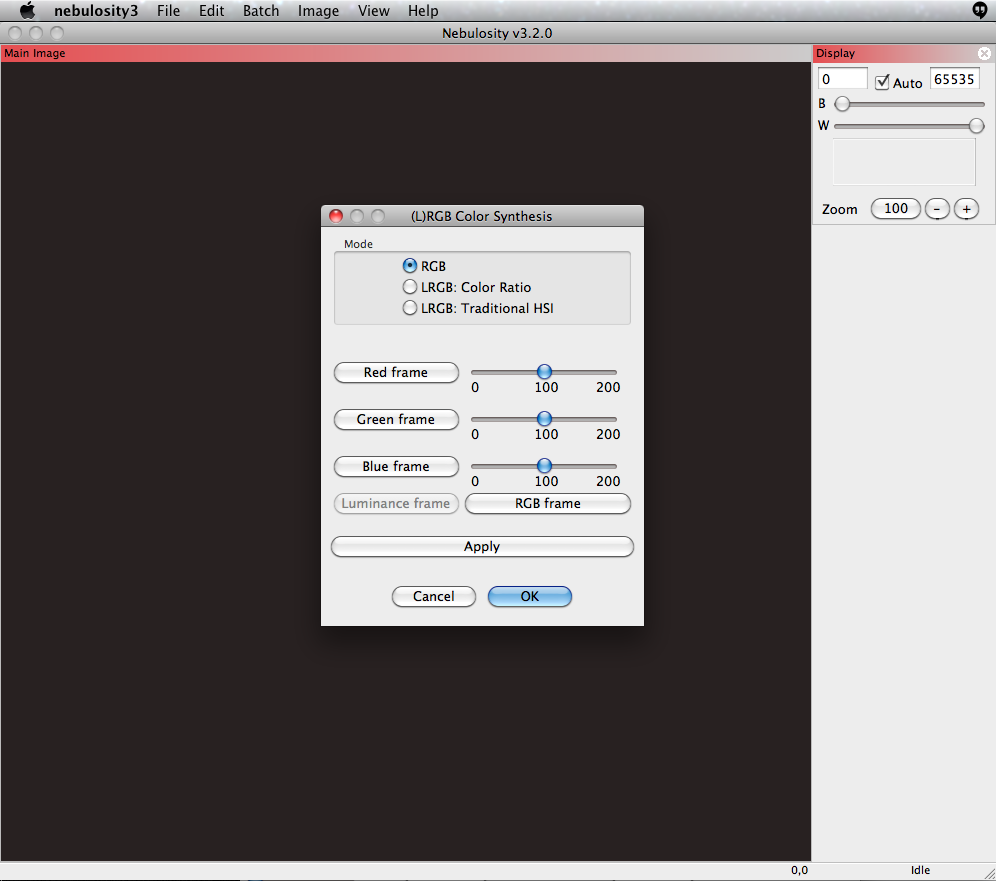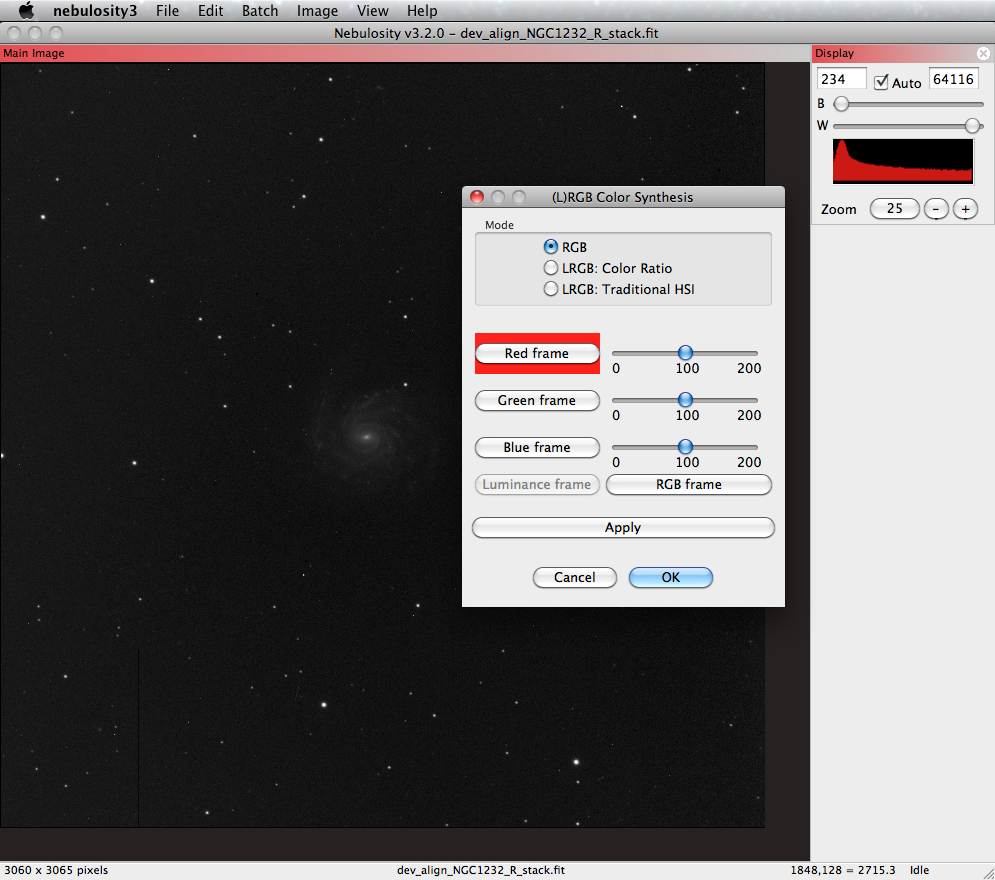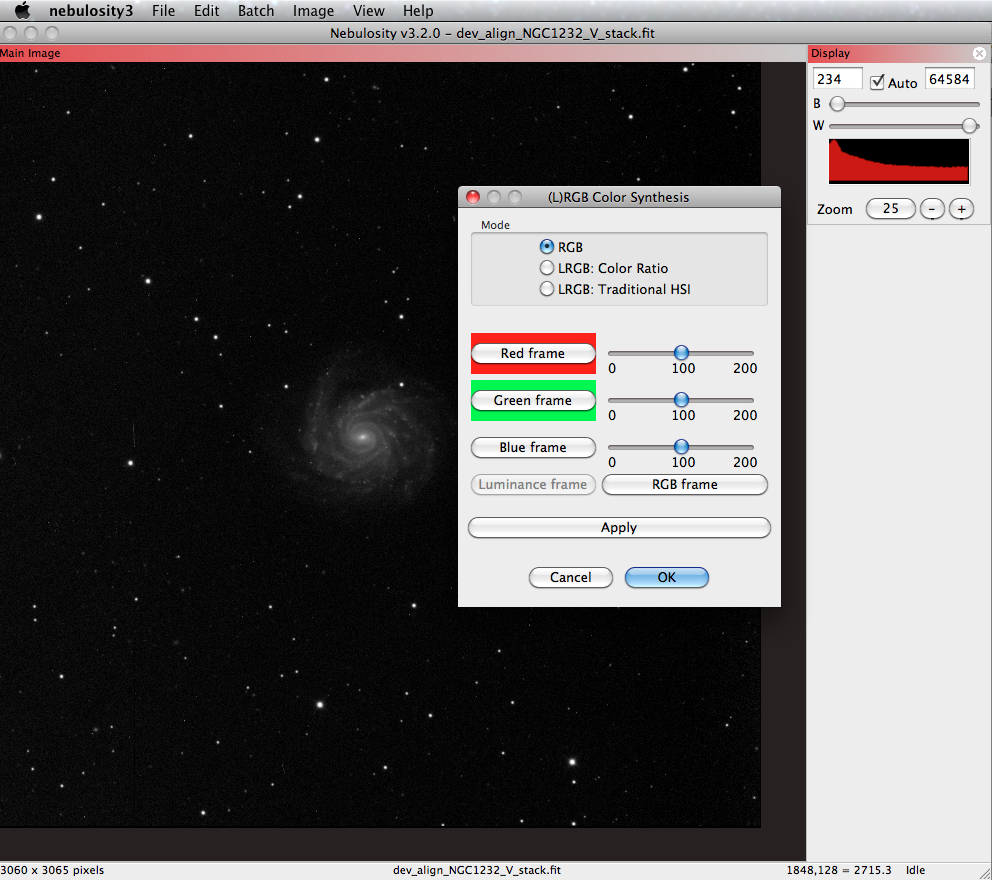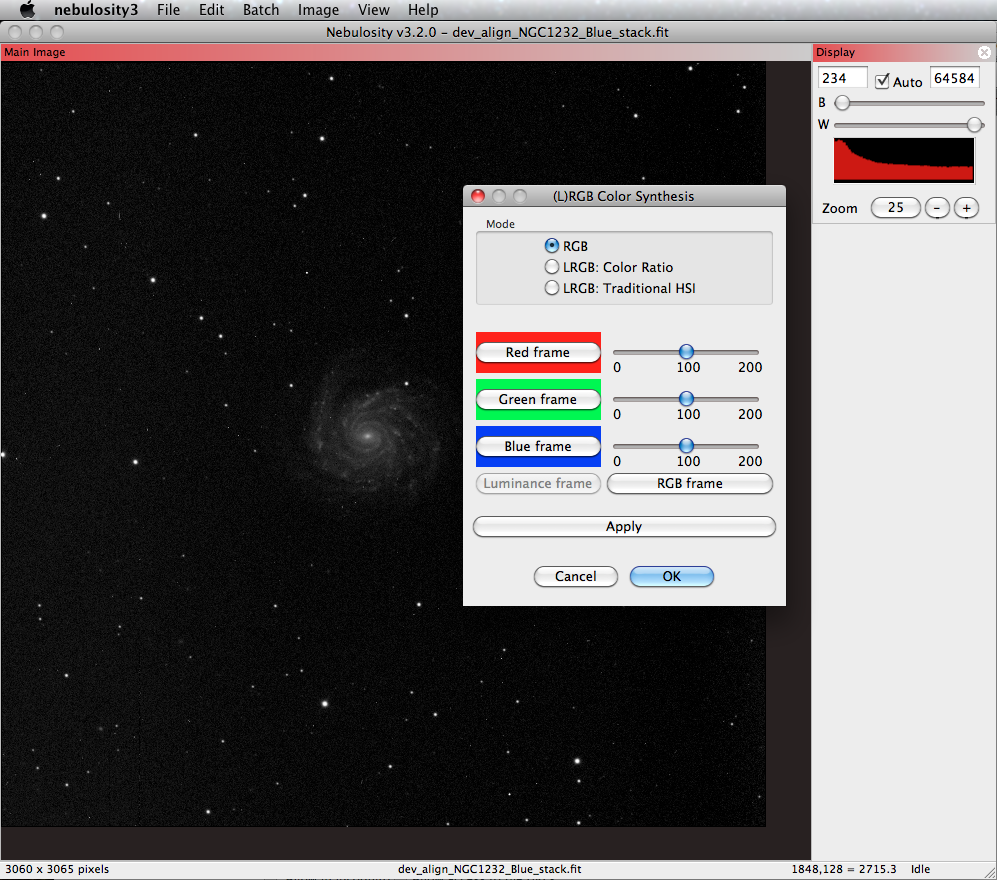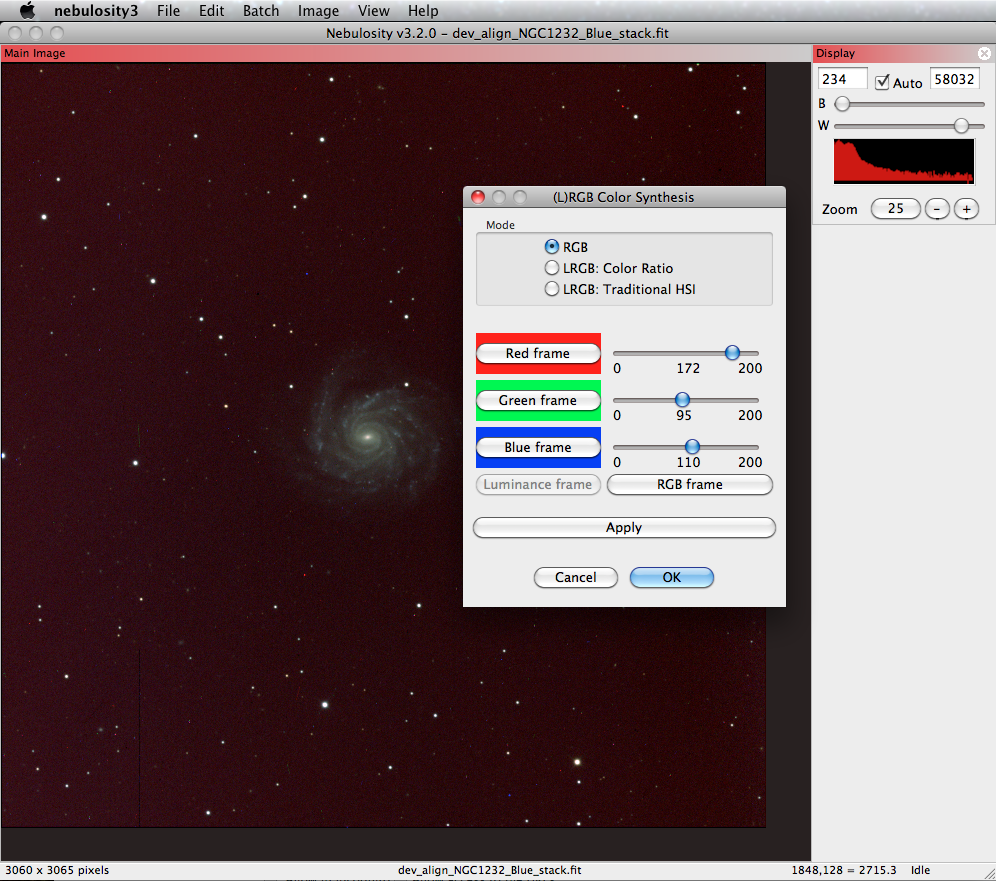Difference between revisions of "Create 3-colour images"
From PMU199L0111
| Line 42: | Line 42: | ||
* Play around with the sliders until you have an image that is not dominated too much by one colour. If you have stars in your image, most of them should look fairly white, bluish white, or yellowish. Here, we have boosted the red to 172, brought the green down to 95, and boosted the blue to 110. Our background is now fairly red, but we can adjust that in the fine-tuning later. | * Play around with the sliders until you have an image that is not dominated too much by one colour. If you have stars in your image, most of them should look fairly white, bluish white, or yellowish. Here, we have boosted the red to 172, brought the green down to 95, and boosted the blue to 110. Our background is now fairly red, but we can adjust that in the fine-tuning later. | ||
[[Image:rgb8.png]] | [[Image:rgb8.png]] | ||
| + | |||
| + | * Click "OK" when you are finished. Be sure to save your new file. We now have our RGB file, | ||
| + | <pre>NGC1232_RGB.fit</pre> | ||
== Fine-Tuning Your Image == | == Fine-Tuning Your Image == | ||
Revision as of 05:55, 2 December 2014
Basic Steps
Follow the steps below to create your 3-colour image:
- Open the Image menu, then select LRGB Color Synthesis.
- The simplest mode is RGB. Use this if you have three colour frames, but do not have a luminance frame.
- If you do have a luminance frame, use LRGB: Color Ratio mode.
- Click on the "Red frame" button to load your red filter frame.
- Repeat with "Green frame" and "Blue frame".
- If you have a luminance frame, click on "Luminance frame" to load it.
- Click "Apply." You should see your combined (L)RGB image in the main window. Use the "Zoom" buttons on the right-hand menu to adjust the frame so that you can see your object of interest. Your image will likely not look the way you want it to yet. There is a good chance that it may be too green, for example.
- Use the sliders to adjust the relative amount colour in each of the filters. Sliding the "Green" slider from 100 to 75, for example, will decrease the amount of green in your image. Click "Apply" to see how increasing or decreasing the slider affects your frame. It is a good idea to adjust just one filter at a time.
- Once you are satisfied with the colours in your image, click "Apply" and then "OK."
IMPORTANT: Once you have clicked "OK", you CANNOT use the sliders to adjust the relative amounts of each colour. You may therefore wish to record what the values on each slider were in case you wish to recreate your image later.
Example
We will step through the above procedure using our R, V, and B filter images of NGC 1232. Recall that first, we aligned and stacked the raw telescope data. Then we digitally developed them to bring out the details of the galaxy. We now have three files:
dev_align_NGC1232_R_stack.fit dev_align_NGC1232_V_stack.fit dev_align_NGC1232_Blue_stack.fit
- Open the Image menu and select LRGB Color Synthesis:
- Click on "Red frame" to load your red filter frame (in this case, dev_align_NGC1232_R_stack.fit). Once the file is loaded, the "Red frame" button will have a red background behind it.
- Load the "Green frame" (dev_align_NGC1232_V_stack.fit) and "Blue frame" (dev_align_NGC1232_Blue_stack.fit).
- Click "Apply" to combine the filters. This is what Nebulosity shows for our images:
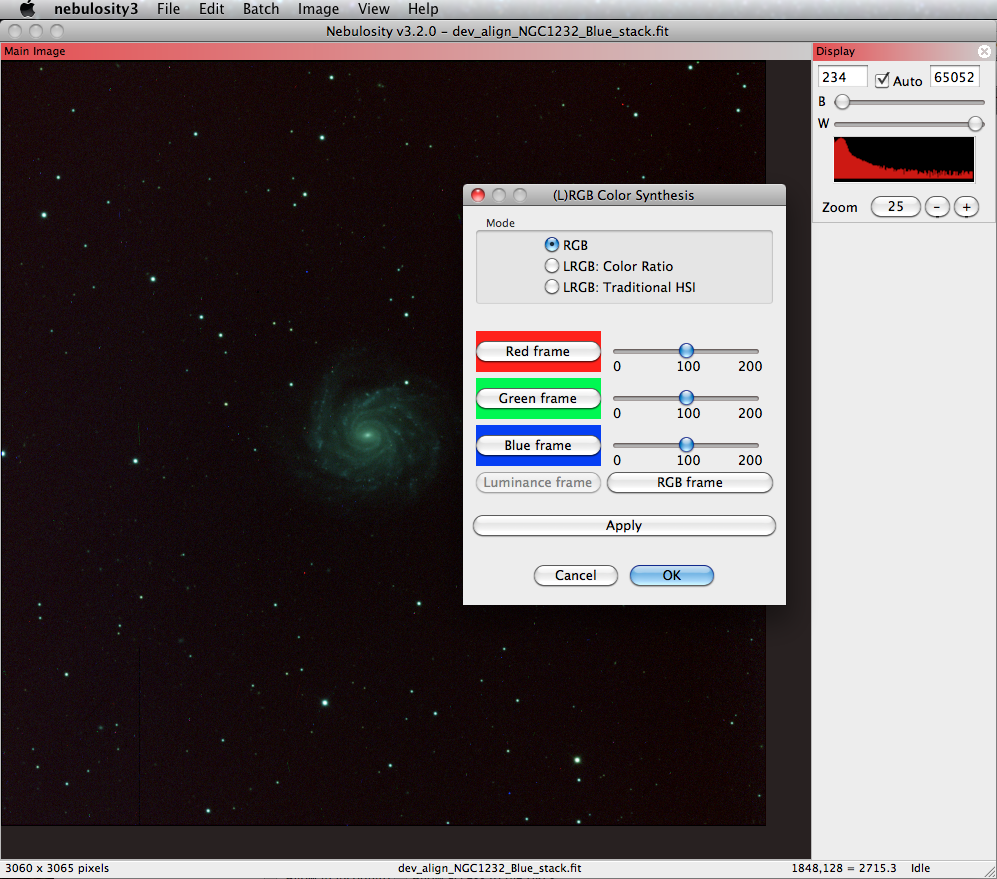 Note how green the image is. Recall that our green filter had the brightest details in the galaxy out of our three filters, and that our red filter had the dimmest details - it makes sense, then, that green would dominate our image.
Note how green the image is. Recall that our green filter had the brightest details in the galaxy out of our three filters, and that our red filter had the dimmest details - it makes sense, then, that green would dominate our image.
- You can adjust the sliders to change the amount that each filter contributes to the image. Here, we boost the Red Frame to 155. Our galaxy still looks too green, however.
- Play around with the sliders until you have an image that is not dominated too much by one colour. If you have stars in your image, most of them should look fairly white, bluish white, or yellowish. Here, we have boosted the red to 172, brought the green down to 95, and boosted the blue to 110. Our background is now fairly red, but we can adjust that in the fine-tuning later.
- Click "OK" when you are finished. Be sure to save your new file. We now have our RGB file,
NGC1232_RGB.fit
